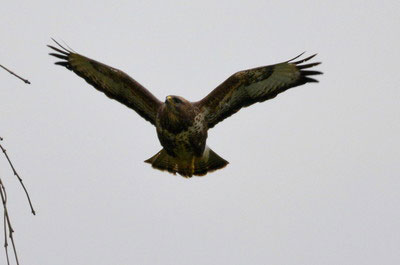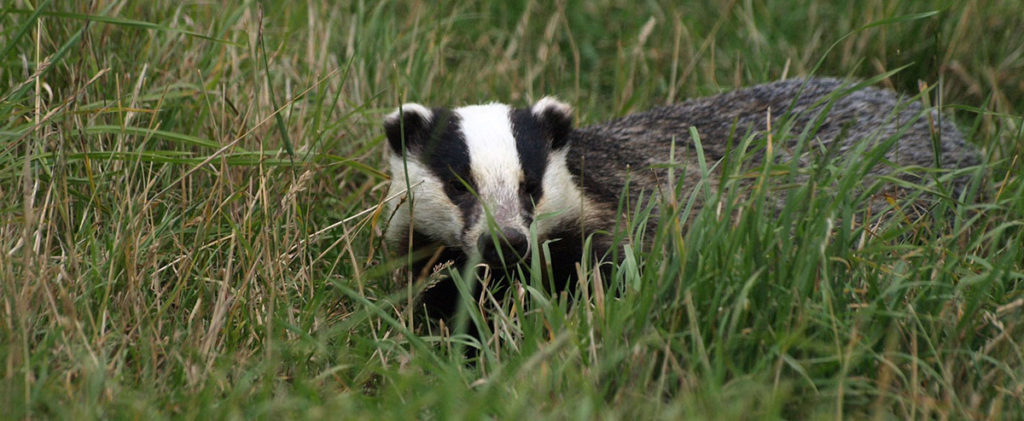[et_pb_section bb_built=”1″ inner_width=”90%” inner_max_width=”1086px”][et_pb_row][et_pb_column type=”3_4″ custom_padding__hover=”|||” custom_padding=”|||”][et_pb_text admin_label=”Journalist Story” _builder_version=”3.17.6″]
 Since 2000, the buzzard has nested all over the UK.
Since 2000, the buzzard has nested all over the UK.
This follows the disastrous fall in numbers during the 1950s and 60s caused largely by the widespread outbreak of myxomatosis, which decimated the UK rabbit population. Rabbits were one of buzzards’ favourite prey, so the sudden loss of food source had a massive impact on the birds before they learned to find their meals elsewhere. On top of that, the use of organochlorine pesticides, harmed fertility rates as the accumulation of the pesticide in the egg shell made eggs extremely fragile.
Having recovered from the ordeal, buzzards now thrive, with an estimated 31,000-44,000 breeding pairs in the UK. This is thanks to its protected status under the 1981 Wildlife and Countryside act, along with a recovery in rabbit numbers.
However, the impact of this protection is a contentious issue. While the protection of the buzzard has undoubtedly saved a stunning native raptor, the impact on gamekeepers across the UK is something which cannot be ignored; with buzzard attacks threatening the viability of many smaller shoots. And this raises a wider issue, which sits at the heart of the conservation debate; at what point do we begin to reduce protection?
The badger cull is a similar debate. Under protection, badger numbers have exploded, saving this beautiful species. But as proven carriers and transmitters of Bovine TB, the impact on the UK’s cattle farmers is unprecedented, destroying livelihoods and entrenching divisions.

At what point then must numbers be reduced? The badger cull and licenses to control buzzard numbers have outraged many, yet the impact these species have on people whose living depends on driven shooting and farming means something must be done.
And there are other species which will likely provoke the same debate in the near future. What about the plans to reintroduce wolves to parts of Scotland, with the ultimate view of a UK-wide reintroduction? Not seen in the British Isles since the 1700s, while the wolf is no doubt a beautiful and once native animal, the impact of reintroduction on the farming community could be devastating. Even when they were numerous, they were controversial; with successive monarchs seeking to try and decrease their numbers to protect livestock.
Beavers are a further example, and like the badger cull, have particular relevance for me in Devon. With the Scottish government announcing protected status for the species in February, it seems they are here to stay. However, our beaver community here on the River Otter, as in Scotland, again fuels the debate around their impact on ecosystems as well as farming, raising further doubts around how we approach conservation.
I don’t claim to have the answer, however, in my opinion, it is essential that both sides of the debate are listened too. If you want to maintain the very high population of buzzards and badgers, you first need to find a solution for UK gamekeepers and cattle farmers. If you want to reintroduce wolves and beavers, first you need to work with the people who live and depend on the land around them to prevent negative impacts which will change their lives, perhaps irreversibly.
It’s very easy to dismiss simple things like losing livestock as trivial complaints from a minority rural community. But for us, it’s not so simple. So who decides what’s more important?
[/et_pb_text][/et_pb_column][et_pb_column type=”1_4″ custom_padding__hover=”|||” custom_padding=”|||”][et_pb_sidebar _builder_version=”3.17.6″ area=”et_pb_widget_area_19″ orientation=”right” /][/et_pb_column][/et_pb_row][et_pb_row][et_pb_column type=”4_4″ custom_padding__hover=”|||” custom_padding=”|||”][et_pb_team_member admin_label=”YS-Journalist Euan Trower Bio” _builder_version=”3.17.6″ name=”Euan Trower” position=”Young Shot Journalist” image_url=”https://0ld.basc.org.uk/wp-content/uploads/2018/11/Euan-trower-pic.jpg” custom_css_member_image=”width: 200px;” module_class=”ys-journalists-bio” custom_css_main_element=”border-top: 2px solid #078463;||border-bottom: 2px solid #078463;||border-right: 0px solid transparent; ” saved_tabs=”all”]
I’m 18-year-old A-level student from rural Devon. The countryside will always be a crucial part of me. I spent most of my childhood outside with friends, building dens, climbing trees and exploring the countryside which felt like an uncharted wilderness.
A fundamental part of my growing up was learning how to use guns and knives responsibly; I now respect them as essential tools. I didn’t learn hunting as a cruel, outdated endeavour; I learned hunting as a way to maintain the bond between countryman and countryside. However, this way of life is threatened by increasingly intolerant views based on simple misunderstanding. For many, the countryside is redundant, hunting is cruel and the people who live there nothing more than tourist attractions. This is why in my article I call for greater opportunity to be given to people who’ve never experienced the world I live in, so they can learn to appreciate rural Britain too.
[/et_pb_team_member][/et_pb_column][/et_pb_row][/et_pb_section]